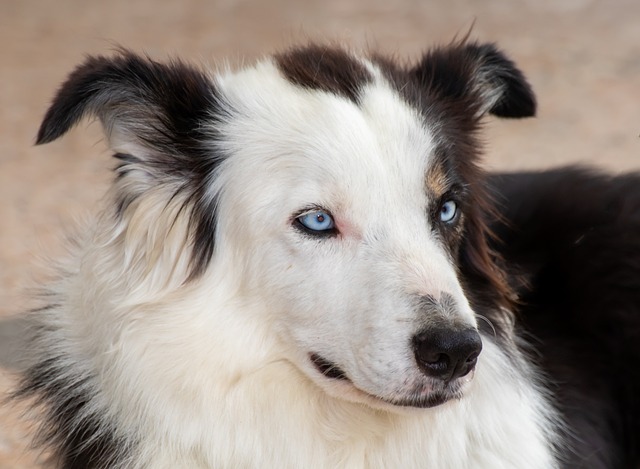
Is standing for a long time harmful to a dog's body
When we see dogs performing on their hind legs in circuses or street entertainers training dogs to stand for prolonged periods to beg,
When we see dogs performing on their hind legs in circuses or street entertainers training dogs to stand for prolonged periods to beg, these seemingly adorable actions conceal numerous little-known health risks. A dog's anatomy is not designed for prolonged standing, and forcing them to maintain this unnatural posture is essentially silently harming these voiceless companions. As responsible pet owners, we must understand the physical impact of standing on dogs to better protect their health.
From an anatomical perspective, a dog's body structure differs significantly from humans. Their spine is horizontally oriented, with forelimbs bearing about 60% of their weight—a design optimized for quadrupedal movement. When standing upright, the entire weight shifts to the hind limbs, subjecting the lumbar spine, hind joints, and pelvis to abnormal stress. Much like forcing humans to walk bent over all day, this physiologically unnatural posture inevitably leads to various health issues over time. Large and giant breeds face compounded risks as their heavier weight exponentially increases joint pressure.
Joint damage is the most immediate harm. A dog's stifle joint (equivalent to human knees) contains complex structures like patellas and cruciate ligaments. Prolonged standing elevates risks of patellar luxation and cruciate ligament tears. Hip joints endure abnormal stress, accelerating the progression of hip dysplasia. These issues may initially manifest as slight lameness but often develop into chronic arthritis, causing persistent movement pain. Watching your once-energetic companion hesitate to rise and greet you due to joint pain is heartbreaking in ways words cannot express.
Spinal issues are equally concerning. Standing forces a dog's spine into an unnatural vertical alignment, radically altering intervertebral disc pressure distribution. Long-term effects may include disc herniation or spinal deformities, especially in long-backed breeds like Dachshunds or Corgis. Compressed spinal nerves can cause localized pain or even hindlimb paralysis in severe cases. Consider how cruel it is when a dog loses control of bowel movements due to spinal damage—such dignity stripped away.

Muscle fatigue and injury present another hidden threat. Standing requires constant engagement of rarely used muscle groups for balance, leading to overexertion. Abdominal and back muscles remain perpetually tense, increasing risks of strains or spasms. Chronic standing also causes muscular imbalances—some muscles overdevelop while others atrophy—compromising overall mobility.
Circulatory disorders warrant attention too. In natural quadrupedal stance, a dog's heart maintains optimal blood flow. Upright standing forces the heart to work against gravity, straining the cardiovascular system. This added burden may trigger or worsen heart conditions in seniors or cardiac-compromised dogs. Hindlimb extremities also face poor circulation, potentially causing swelling or tissue hypoxia.
Beyond physical harm, forced standing induces psychological stress. Most dogs don't willingly stand excessively—training often involves coercion. This unnatural demand breeds confusion and anxiety, manifesting as behavioral changes or appetite loss. When associated with begging, it further disrupts normal psychological patterns.
Vulnerable life stages face heightened risks: puppies' developing bones may deform permanently; seniors' degenerating joints deteriorate faster; overweight dogs' already-stressed joints sustain more damage; pregnant dogs' pelvic pressure from abdominal weight may complicate births.
Certain breeds are especially vulnerable: large breeds like Goldens and Labs with inherent hip issues; small breeds like Chihuahuas with delicate frames; long-backed breeds like Basset Hounds with spinal fragility. Even seemingly robust breeds remain anatomically unsuited for prolonged standing.
Protective measures include: avoiding training that encourages standing; providing non-slip surfaces and ramps for seniors; maintaining moderate exercise to strengthen muscles without overexertion; weight management to reduce joint load; balanced nutrition with joint-supporting supplements. Consult veterinarians immediately if noticing post-standing lameness, movement reluctance, or touch sensitivity.
The sight of dogs running freely in parks epitomizes their healthiest, happiest state. Our love shouldn't subject them to lasting pain for fleeting "cuteness." True love respects their nature—protecting their health so these loyal friends can accompany us longer in their most natural way. After all, as dogs give unconditional love, we owe them scientifically informed, responsible care in return.

When we see dogs performing on their hind legs in circuses or street entertainers training dogs to stand for prolonged periods to beg,

When we prepare to greet the dog's warm greeting as usual, we find that the once bright and clear eyes have become red and swollen, and the dog keeps scratching with its claws, with a look of discomfort and helplessness in its eyes.

When you notice your beloved dog constantly scratching, biting itself, or see its once-smooth coat becoming red, swollen,

When you see your beloved dog constantly scratching or notice suspicious black specks in its smooth fur, it’s natural to feel concerned. Parasites are a common health issue for dogs,

When we look into the eyes of dogs, the originally bright and clear eyes suddenly show distressing red bloodshot, and even become swollen and secrete more.

At the moment when the door closes, there comes the heart wrenching barking of dogs inside the house, or when they come home and see a chewed sofa and scattered slippers,